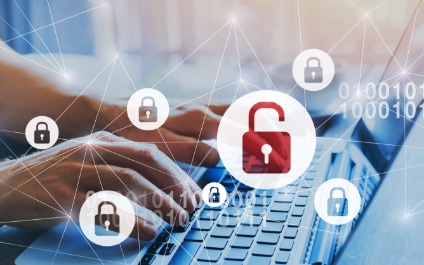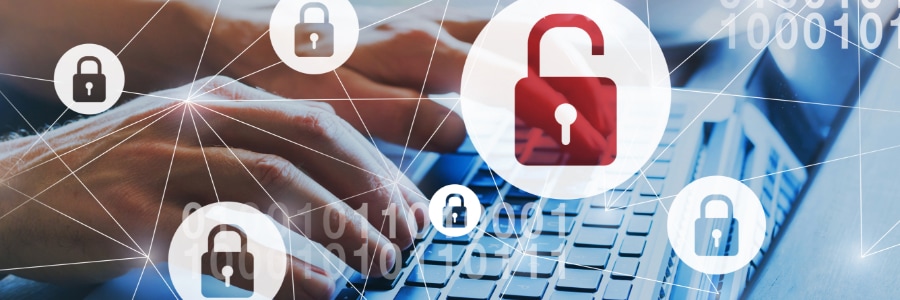October is Cybersecurity Awareness Month! This month acts as a great reminder to do a temperature check on your personal and business’ cyber security. Each October focuses on a different challenge for cybersecurity, as well as identifies opportunities for behaviour change. This year, the theme set by the National Cybersecurity Alliance is Own IT, Secure IT, and Protect IT. So what does that mean?
The 16th annual Cybersecurity Awareness Month is centred around encouraging accountability on a personal level, as well as increasing proactive behaviours in security practices and digital privacy. Let’s break it down further:
Own IT
Updating your privacy settings, keeping an eye on the applications on your devices (including being aware of location settings), and staying safe on social media are all steps you need to take accountability for.
- Social media: Remember, there isn’t a delete button online, so it’s important to limit the information you share on social media. It’s also important to only connect with people you know, and to report suspicious activity early.
- Smart devices: Now, so many different devices are able to connect to the Internet. To Own IT, make sure you secure your network, keep up-to-date on the latest software and security updates, and set custom passwords.
- Stop auto-connecting: Especially when you travel, your device will automatically seek and connect to available networks, making you vulnerable to cyber attacks. Disable these features so that you choose which network you connect to.
Secure IT
Keeping your profiles secure is paramount in protecting yourself and your organization. Taking extra steps to keep your accounts secure will save you from cyber attacks and security breaches down the road.
- Choose a strong password: Get creative with your passwords, and make sure they’re hard to guess. To further secure yourself, you should be using a different password for every account – and using a password manager to remember all your passwords.
- Work secure: Keep your software updated to the latest version and regularly check your security settings, including on your Wi-Fi networks. Ensure you don’t click on unknown links and don’t engage with suspicious messages – and educate your employees or co-workers on how to avoid phishing scams.
- Use multi-factor authentication (MFA): Adding an extra layer of security around sensitive information is never a bad idea. MFA links your account to something you know, something you have, or something you are to make it more difficult for a different user to access your information. For example, when you add a new eTransfer contact, your bank will send a verification code to your cellphone that you must input in order to add the new contact.
Protect IT
Once your data is secure, you need to continue to keep it safe. Advances in technology are twofold: they help us achieve more and access more information, but they also give cyber attackers new ways of accessing our data.
- Protect consumer data: If you collect data from consumers, it is your job to keep it safe.
- Practice safe Wi-Fi usage: Don’t connect to unfamiliar networks on your devices. We keep so much personal information on our phones, tablets, and laptops now – you don’t want to put any of it at risk because you connected to an unsecure network.
- Stay up-to-date: Stop putting off software updates! Often, software updates feature important security upgrades that will protect your account against cyber attacks and malware.
Want more tips to stay cyber smart? We’d love to help – book an appointment with us to own, secure, and protect your IT.


